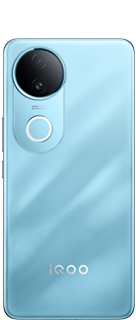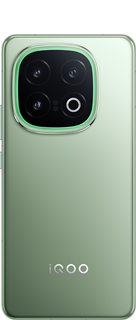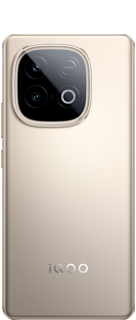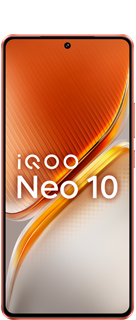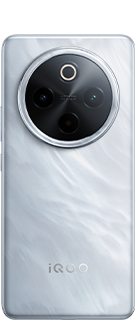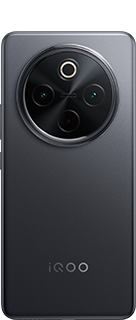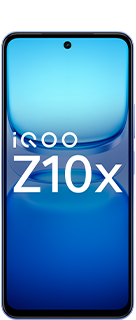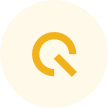Snapdragon 8s Gen 3 vs Snapdragon 8 Gen 3: What’s the Difference?
Qualcomm has just launched a new Snapdragon 8 series chipset and it’s the Snapdragon “8s” Gen 3. The premium segment already has the Snapdragon 8 Gen 3, so what this chipset is all about? Well, Qualcomm says the new Snapdragon 8s Gen 3 SoC is designed with “specially selected Snapdragon experiences”. So to find out the differences between Snapdragon 8s Gen 3 and Snapdragon 8 Gen 3, we have carefully compared both the chipsets considering their CPU layout, GPU capability, modem performance, and more. On that note, let’s go through the comparison.
SPECS COMPARISION TABLE.

- Snapdragon 8s Gen 3 vs 8 Gen 3: CPU
First, let’s compare the CPU on the Snapdragon 8s Gen 3 and 8 Gen 3. Both chipsets feature eight Kryo CPU cores and pack the same cores, although in a different layout.
The Snapdragon 8s Gen 3 has a single prime core, Cortex-X4, clocked at 3.0 GHz. Plus, there are 4x performance cores (Cortex-A720) clocked at 2.8GHz and 3x efficiency cores (Cortex-A520) clocked at 2.0GHz.

On the other hand, the top-tier Snapdragon 8 Gen 3 boasts higher clock speeds on all cores. The Cortex-X4 core is clocked at 3.3GHz on the standard version of 8 Gen 3 — 300MHz higher than SD 8s Gen 3. On Snapdragon 8 Gen 3 for Galaxy (peak frequency of 3.4GHz), the Cortex-X4 core gets an additional boost of 100MHz so the difference of 400MHz gets a bit wider in comparison to the new Snapdragon 8s Gen 3.
While Qualcomm has kept identical cores across both chipsets, the peak frequency has been reduced on the 8s Gen 3. This means, in terms of CPU performance, the latest Snapdragon 8s Gen 3 would rank below the Snapdragon 8 Gen 3 and may also struggle to beat 2022’s flagship Snapdragon 8 Gen 2. However, the CPU performance would surely be better than Snapdragon 7 series chipsets. I can’t wait to put this new chipset to the test and see where it slots in.
Once I get my hands on an 8s Gen 3-powered smartphone, I will surely run the Geekbench test and evaluate how the CPU stacks up against premium-tier chipsets from Qualcomm. So stay tuned for a lot of benchmark tests.

Adreno 735 GPU supports most of the Snapdragon Elite Gaming features, including Hardware-accelerated Ray Tracing, Adreno Frame Motion Engine 2.0 (AFME), Super Resolution, HDR gaming, Shadow Denoiser, and more.
That said, there are two headline gaming features missing from Snapdragon 8s Gen 3. You don’t get support for Unreal Engine 5 Lumen Global Illumination and Reflections System.
While there is HW-accelerated Ray Tracing support, the lack of Global Illumination means games won’t have nearly the same degree of authentic lighting, reflections, and shadows that you see on Snapdragon 8 Gen 3-powered phones.
Snapdragon 8s Gen 3 vs 8 Gen 3: NPU
On the NPU front, Qualcomm says that the Hexagon NPU on the Snapdragon 8s Gen 3 is on par with m8 Gen 3’s Hexagon AI Engine. Both chipsets can run AI models up to 10B parameters on-device and support multi-modal models. From photo expansion to AI image generation locally, both SoCs are capable enough to do any Generative AI tasks.

That said, the AI performance won’t be as fast as SD 8 Gen 3’s NPU. Given that SD 8s Gen 3 has a relatively weaker CPU and GPU, which are also used for AI tasks besides the NPU, the performance will take a hit for sure
- Snapdragon 8s Gen 3 vs 8 Gen 3: ISP
The building blocks of both ISPs are the same. You get Cognitive ISP with triple 18-bit ISPs in tow and support for real-time semantic segmentation with up to 12 layers, on both photos and videos. Both chipsets have identical photo-capturing capabilities, however,
Snapdragon 8 Gen 3 can record 8K HDR videos at 30 FPS. The Snapdragon 8s Gen 3’s ISP is limited up to 4K HDR videos at 60 FPS.

Besides that, Snapdragon 8 Gen 3 allows you to record 4K videos at 120 FPS, slow-mo videos at 720p at 960 FPS, Night Vision RAW video capture at 4K 60 FPS with AI Noise Reduction, and even supports C2PA standard for distinguishing between real and AI-generated photos (Truepic).
In comparison, the Snapdragon 8s Gen 3 lets you record videos up to 4K at 60 FPS and slow-mo 1080p videos at 240 FPS. It lacks support for AI-powered Night Vision, C2PA-compliant Truepic, video object eraser feature, or Qualcomm’s Vlogger’s View feature that lets you use both selfie and rear cameras at the same time.
- Snapdragon 8s Gen 3 vs 8 Gen 3: Connectivity and 5G
Both Snapdragon 8s Gen 3 and 8 Gen 3 come with Qualcomm’s FastConnect 7800 system, which means connectivity features remain the same across the board. You have Wi-Fi 7, Bluetooth 5.4, and Bluetooth LE Audio on both chipsets.

That said, the Snapdragon 8s Gen 3 packs the older Snapdragon X70 5G modem (available on Snapdragon 8 Gen 2) which offers a peak download speed of up to 5 Gbps. The newer Snapdragon X75 modem on SD 8 Gen 3 can achieve a peak download speed of up to 10 Gbps. The upload speed remains the same on both modems.
- Snapdragon 8s Gen 3 vs 8 Gen 3: Storage and Memory
While both Snapdragon 8s Gen 3 and Snapdragon 8 Gen 3 support UFS 4.0 storage and LPDDR5X memory, there is a slight difference here that you must keep in mind. The LPDDR5X memory on SD 8s Gen 3 can operate up to 4200MHz, but 8 Gen 3 can deliver slightly faster performance because the memory channel can go up to 4800MHz.
Snapdragon 8s Gen 3 vs 8 Gen 3: The Verdict
In my opinion, the Snapdragon 8s Gen 3 is a slightly muted version of the current-gen flagship SoC, Snapdragon 8 Gen 3. Qualcomm has packed all the flagship specs on the 8s Gen 3 but tuned it in a way that it caters to OEMs looking to offer 8 series chips at an attainable price.
It does not have additional bells and whistles like Global Illumination, video object eraser, or even Truepic support, likely reducing Qualcomm’s licensing costs.
Sure, the CPU and GPU on Snapdragon 8s Gen 3 are relatively less powerful than 8 Gen 3, but it’s still a capable chipset that can deliver powerful performance, in line with other flagship chipsets. I would say, the Snapdragon 8s Gen 3 maintains its position in the realm of premium flagship chipsets.
So what do you think about the new 8 series processor from Qualcomm? Does the lack of features or underclocked CPU/ GPU break the deal for you? Let us know your opinion in the comments section.
Thankyou
@iQOO Connect@NipunMarya@Andybitts@TechieGuy@Sameer Shaikh @RZ Nitin @Rahul S @UZAIR @HasanRazaKhan @NITIN
Please sign in
Login and share
